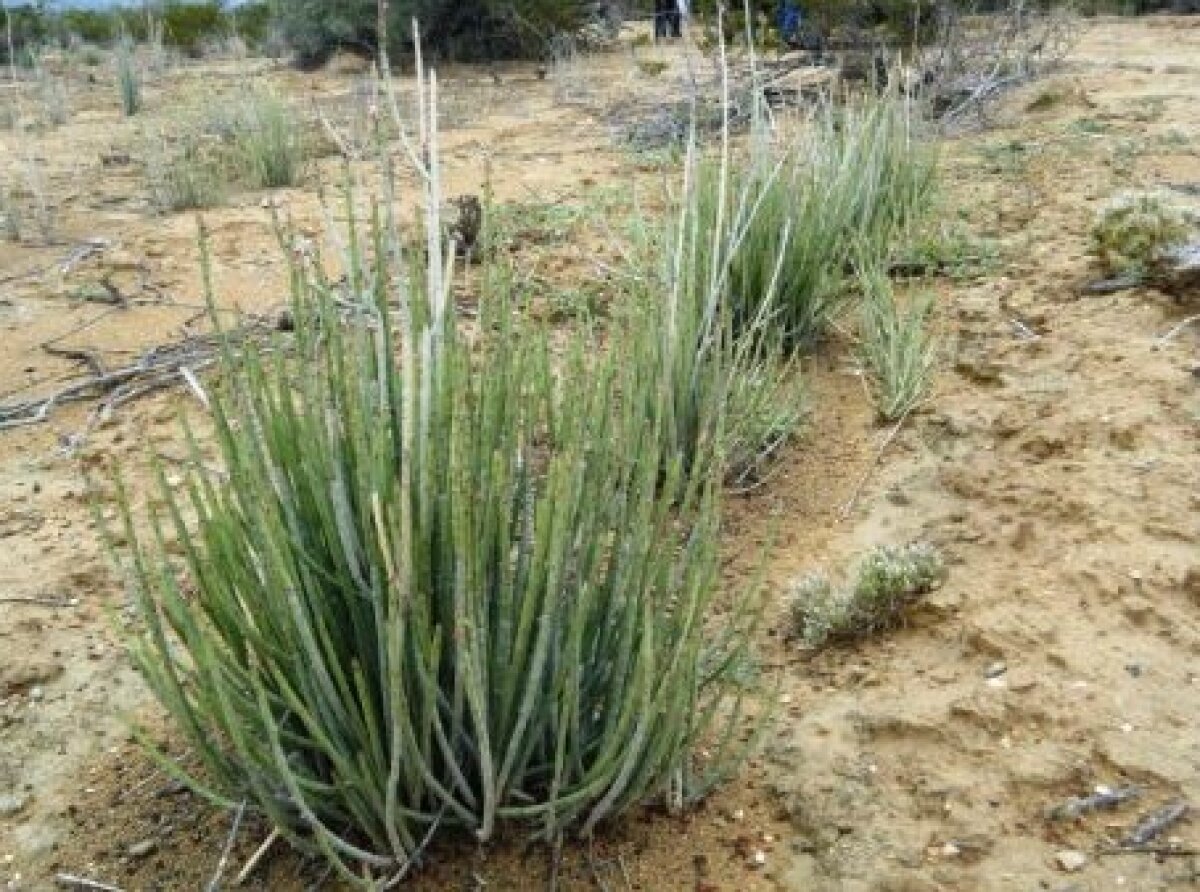The semi-arid areas of Mexico provide us with very valuable forest resources, one of them is the natural wax extracted from the candelilla plant.
In the area of the Chihuahuan Desert, which includes the states of Chihuahua, Coahuila, Durango, Hidalgo, Zacatecas, among others, a area of extreme conditions, is where the candelilla plant grows, which is endemic to Mexico, in particular of this area.
The candelilla plant (Euphorbia antisyphillitica) is one of the few plants in the world that contains a high amount of hydrocarbons, which facilitates the extraction of natural wax. The discovery and use of this plant is attributed to the pre-Hispanic natives of northern Mexico, who boiled the rods of the plant in clay pots to extract the wax, and placed it on the string of their bows, to protect them from changes in temperature.

Since the production of candelilla wax began in the mid-1900’s, it has been of great economic importance for the semi-desert regions of Mexico, which are known as the candelilla regions. For more than 100 years, it has benefited over 3,500 producers who are distributed in 230 ejidos in 33 municipalities in northern Mexico.
The wax obtained from this plant is of excellent quality, and is considered extremely valuable. Approximately 90% of the wax production is exported to countries such as United States, Japan, Germany, Spain, France, Holland, England, Ireland, Italy, Colombia, and Argentina.
Traditionally, to extract candelilla wax, sulfuric acid is used in a metal container with boiling water, which is not a safe process for the worker, nor for the environment.

For this reason, the National Forestry Commission (CONAFOR,) financed a research project to design a high-performance process in the extraction of high-quality candelilla wax, and determine end-use products from the prepared wax. The results were higher yields obtained with the use of new equipment and an organic extraction agent, tartaric acid. The wax obtained also presented a higher purity. Four different organic acids were evaluated, and each one allows obtaining wax of excellent quality, corroborated through various studies.
Ejido Caopas, in the municipality of Mazapil, Zacatecas, has been given the opportunity to take advantage of this project, receiving a technological package containing equipment to implement a hydrothermal purification process of candelilla using with organic acids, for the preparation of a commercial product ready for sale. The project will be supported and managed by CONAFOR and the Autonomous University of Coahuila.

The current social conditions of the Caopas ejido correspond to families of ejidatarios dedicated to agriculture with an important contribution of production and sale of candelilla wax in the state of Zacatecas. Although the wax is appreciated throughout the world, local resale is not really profitable, as sales at this level barely cover production costs for the candelilleros, with a high risk to their health.
Currently, the Caopas ejido have a valid permit to use the non-timber resource of the candelilla plant, under the strong commitment by the ejido that it be sustainable and for the benefit of the ejido.
However, one of the main problems has been that they do not generate added value to the candelilla wax that they obtain from the process that they have been using. They sell their product without purification to intermediaries who then resell it to large companies, and they refine it and market it at a higher price.
Using the new equipment will have direct economic impact to the candelilleros who will be able to produce, purify, and commercialize high quality candelilla wax without intermediaries, thus increasing the profit margin. Additionally, it will eliminate sulfuric acid from the process, which generates pollutants that can be discharged into the environment by air, land, and water.
Candelilla wax is used in the cosmetic industry as an emollient and film-forming agent, as the market is driven by the consumer preference for a "natural" cosmetic and there is an increase in demand for natural waxes.
It is also used in some foods as an anti-caking agent, a bulking agent, an emulsifier, or a coating agent.

